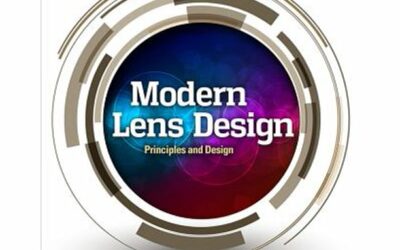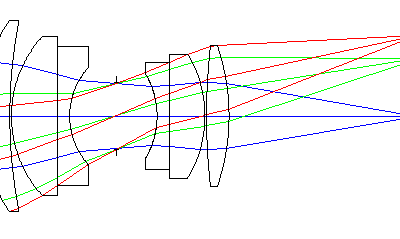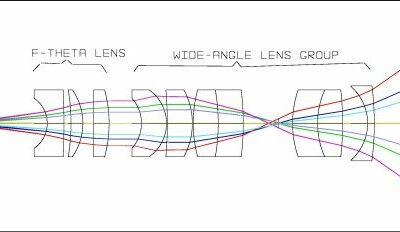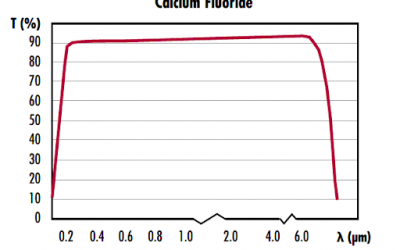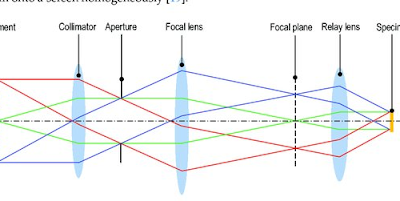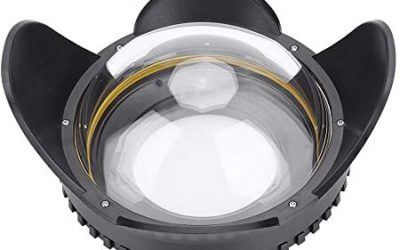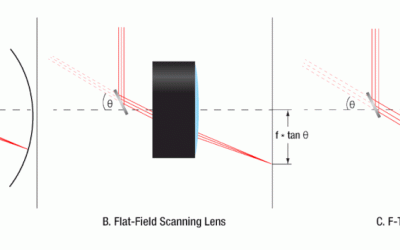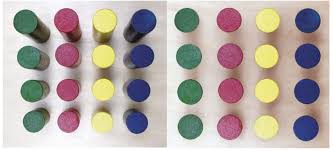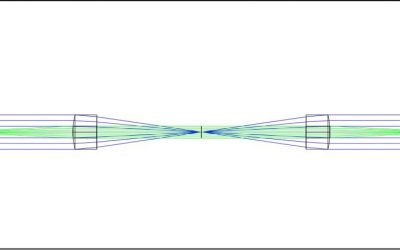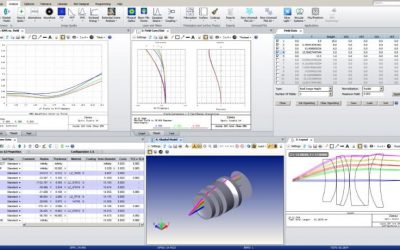Liquid lenses, are a type of optical lens that have a tunable focal length by shaping a liquid electronically. These lenses can be based on voice coil actuation, or based on electrowetting technology, which involves manipulating the surface tension of a conductive...
lens design consulting
Top 12 Resources for Mastering Lens Design: A Comprehensive Guide
by Victor Argueta | FAQ, lens design consulting, optical design, Zemax
In this post we will review textbooks, online tutorials, discussion forums like the ELE Optics Community and software training programs like Zemax training and other great sources to help engineers learn lens design from basic concepts to advanced techniques.
3 Keys To Quality Double Gaussian Lens Design
by Victor Argueta | FAQ, lens design, lens design consulting, Uncategorized
One of the most common lens system designs- especially in photography- is what is called a Double Gaussian lens. There are several different configurations, and close to 90 different patents have been filed from 1936 – 2010. One of the reasons this lens design configuration is so popular is that it corrects many of the major image aberrations with a relatively low number of optical elements.
Steering Mirrors In LIDAR Systems
by Victor Argueta | FAQ, lens design consulting, Optical Components, optical engineering, Victor Argueta
This is our third installment of a four-series blogs about steering mirrors. We have talked previously about steering mirrors in laser markings and steering mirrors in OCT systems. This week, we will talk about the steering mirror requirements for those in LIDAR...
Calcium Fluoride Glass: An Overview
by Victor Argueta | FAQ, lens design consulting, OFH, Optical Components
The choice of glass is a fundamental part in the optical design process. This is especially true for IR and thermal optics materials. In this article, we will review Calcium Fluoride (CaF2), an interesting glass that has a wide range of applications. Before we start,...
Koehler Illumination
by Victor Argueta | FAQ, lens design consulting
When designing any optical system, an optical engineer needs to consider how illumination will be used: specifically, how the illumination could affect the way the image is created. If not carefully designed, some illumination systems may create a kind of...
Fisheye Lens Design
by Victor Argueta | FAQ, illumination, lens design consulting, optical design
Anyone who has peaked through a hotel room peephole has used a fish eye lens. Usually, the fish eye lens has a very short focal length (less than 15mm for a 35mm-size image sensor), but a large field of view (FOV). The latter can be as large as...
Apochromatic Lens Design
by Victor Argueta | FAQ, lens design, lens design consulting, optical design, optics definitions
In an achromatic lens design, we optimize such that two wavelengths, usually red (590nm) and blue (495nm), focus on the same image plane. This is done to reduce chromatic aberration. In this article, we’ll talk about a similar design type called an Apochromatic lens...
Optical Design Considerations for Underwater Optics
by Victor Argueta | FAQ, illumination, lens design consulting
The design of an underwater camera lens can be challenging due to the large number of variables at play. As with every optical system design, the selection of cameras, lenses, housings, and operational parameters greatly influences the performance of the complete...
The Role of F-theta Lenses in Laser Scanning
by Victor Argueta | lens design, lens design consulting, machine vision
Introduction to f-theta Lenses In the landscape of optical systems, the introduction of f-theta lenses is an important chapter, offering a solution to the challenges posed by traditional lenses in laser scanning applications. As laser technology becomes more...
Telecentric Lens Design: Enhancing Precision in Optical Systems
by Victor Argueta | FAQ, lens design, lens design consulting, machine vision, optical engineering
Introduction to Telecentric Lenses An important goal in machine vision applications is taking measurements in a consistent, accurate, and precise manner. This can include measuring the dimensions of manufactured parts to guarantee they are within the design...
Deciphering 4f Optical Systems: A Journey into Fourier Optics
by Victor Argueta | lens design consulting, OFH, optics, optics definitions
Introduction A 4F optical system is a system architecture that uses Fourier Optics. In this article, we will explain why we need them and how to design a simple 4f correlator. We will leave out most of the mathematical derivations, but if you are interested...
Mastering Relay Lens Design: Enhancing Optical Systems | OFH
by Victor Argueta | FAQ, lens design consulting, Zemax
Introduction Optical relays, an integral component of various optical systems, play a crucial role when the user's proximity to the observed object is limited or when specific image transformations are required. A prevalent example of this is found in relay lenses,...
Understanding diffractive beam splitters
by OlegRybakovsky | lens design consulting
Diffractive beam splitters A diffractive beam splitter is a diffractive optical element (DOE) used to split a single collimated laser beam into several beams with the same optical characteristics as the original beam. Beams are usually separated into 1D or 2D arrays...
Hiring a lens designer
by John | lens design consulting
Planning to hire a lens design partner to assist with your optical engineering program? Here are a few things to consider. Do you need a lens for illumination or for imaging? The design methods and software tools used for illumination and imaging are different. Many...

